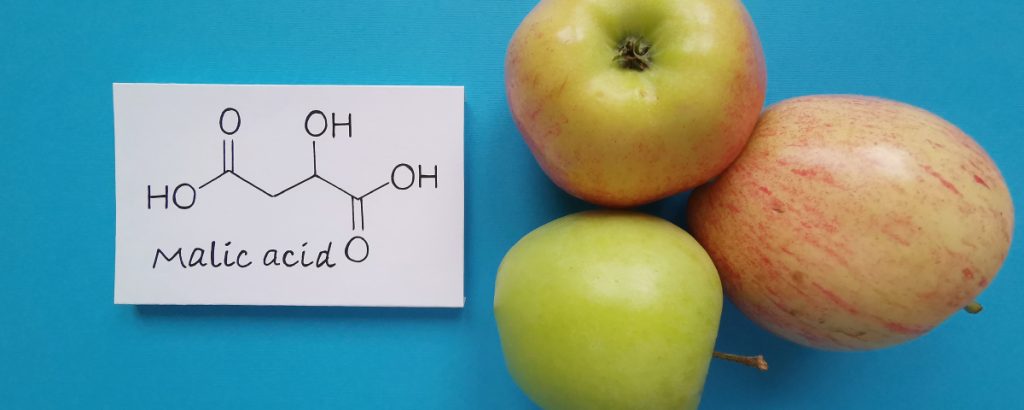In the ever-evolving world of skincare, it seems like there’s always a new ingredient making its way into the limelight. One such ingredient that has been gaining popularity recently is Malic Acid, a type of Alpha Hydroxy Acid (AHA).
If you’re wondering what Malic Acid uses are and what benefits it offers for your skin health, you’re in the right place. Let’s deeply understand everything about Malic Acid and why you should consider incorporating it into your skincare routine.
What is Malic Acid?
Malic Acid, also known as 2-hydroxybutanedioic acid, is a naturally occurring organic acid found in various fruits, with apples being one of the primary sources. This AHA belongs to the same family as glycolic and lactic acids – an excellent choice for improving skin texture and appearance.
Malic Acid Uses in Skin Care
Listed below are some of the best uses of Malic Acid in skin care. Let’s have a look:
1. Exfoliation
One of the primary Malic Acid uses in skincare is its exfoliating properties. It helps remove dead skin cells from the surface of your skin, promoting a smoother and more radiant complexion. This exfoliation can also help in unclogging pores, reducing the chances of acne breakouts.
2. Brightening
Malic Acid can help in reducing the appearance of dark spots, hyperpigmentation, and uneven skin tone. Regular use can result in brighter and more even skin.
3. Hydration
Malic Acid for skin is a natural humectant and is known for its ability to hydrate. It can help your skin retain moisture, making it an excellent choice for those with dry or dehydrated skin.
4. Anti-Aging
Malic Acid is recognized for its mild anti-aging properties. It can help reduce the appearance of fine lines and wrinkles by promoting collagen production, leading to firm and more youthful-looking skin.
Malic Acid Benefits for Your Skin
Here are the ways in which Malic Acid benefits your skin:
1. Natural Source: Since Malic Acid is naturally present in fruits like apples, it’s considered a safer and more natural alternative to synthetic skincare ingredients.
2. Compatibility: Malic Acid can be used alongside other skincare ingredients like hyaluronic acid, niacinamide, and antioxidants, acting as a versatile element in your skincare routine.
3. Improved Texture: Regular use of Malic Acid can lead to smoother and softer skin, which can provide a great canvas for makeup application.
Tips on Incorporating Malic Acid into Your Skincare Routine
If you’re convinced of the Malic Acid benefits for skin and want to add it to your skincare regimen, here’s how to do it:
1. Choose a Product: Look for skincare products that contain Malic Acid, such as serums, toners, or exfoliating pads. Make sure to follow the manufacturer’s instructions for application.
2. Patch Test: Before applying any new product to your face, it’s essential to conduct a patch test on a small area of skin to ensure you don’t have any adverse reactions.
3. Sun Protection: AHAs can make your skin more sensitive to the sun. Always wear sunscreen during the day to protect your skin from UV damage.
Conclusion
Malic Acid is a valuable addition to your skincare routine, offering gentle exfoliation and hydration. With its wide range of benefits and uses, it’s no wonder that Malic Acid is becoming a favorite among skincare enthusiasts.
However, like any skincare ingredient, it’s essential to use it wisely and be patient as you wait for the results.













